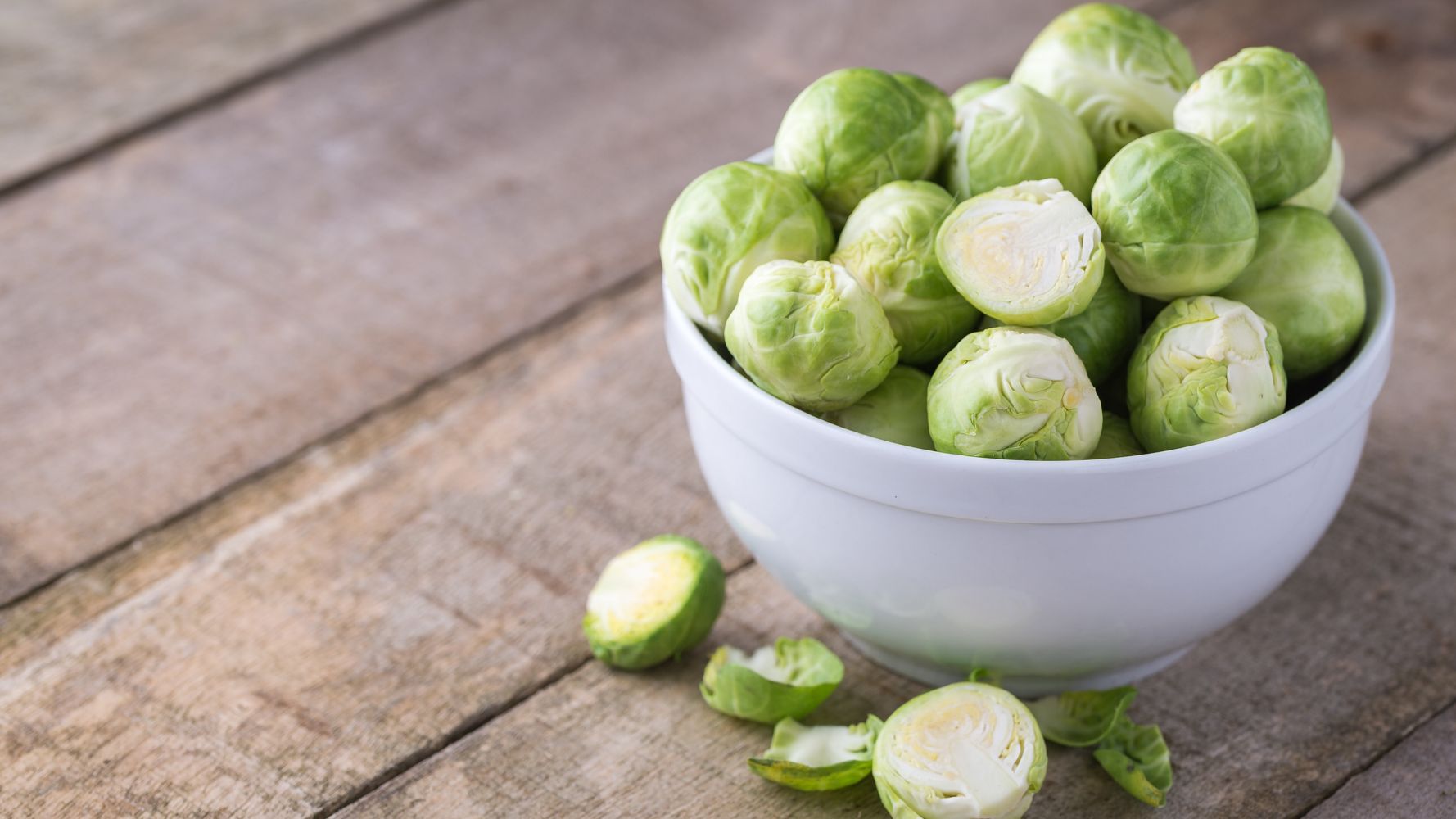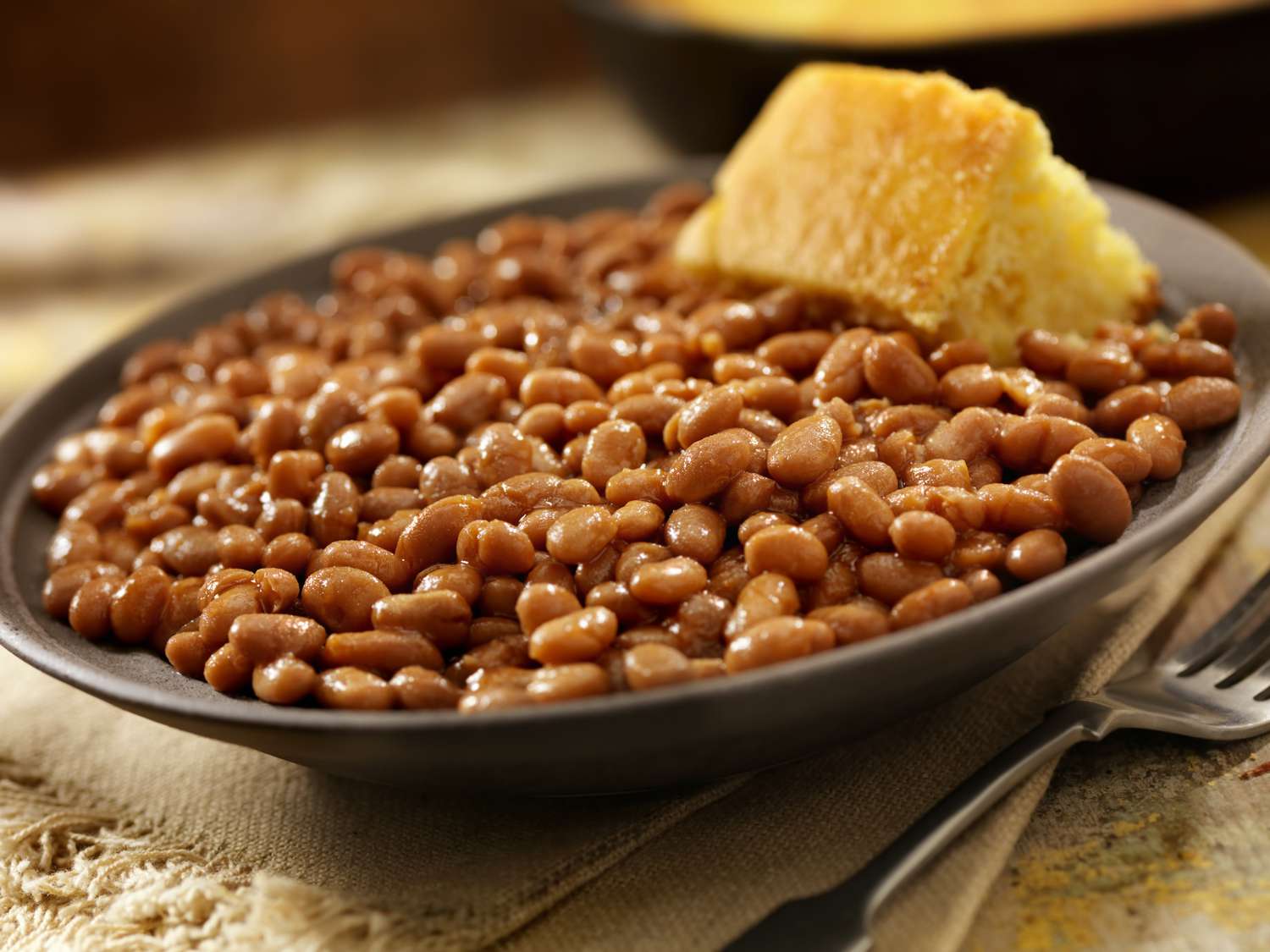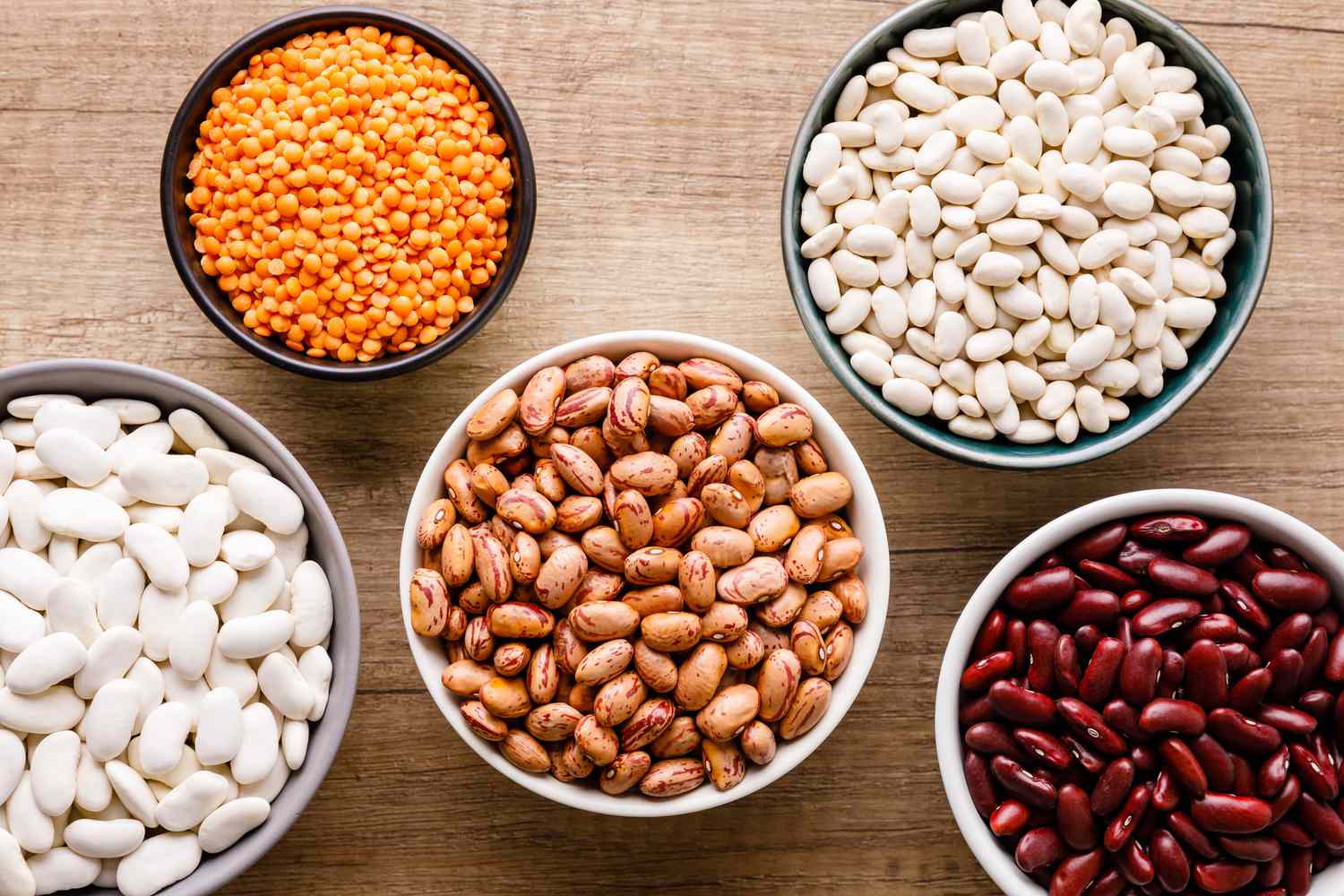

FAQs
What Food Makes You Fart
Modified: August 25, 2023
Discover the answer to the common question "What food makes you fart?" along with other general questions about diet and digestion.
(Many of the links in this article redirect to a specific reviewed product. Your purchase of these products through affiliate links helps to generate commission for Under-tec.com, at no extra cost. Learn more)
Table of Contents
- Introduction
- The Science Behind Flatulence
- Beans and Legumes: The Gas Culprits
- Cruciferous Vegetables: The Fart-Inducing Foods
- Dairy Products: Lactose Intolerance and Gas
- High-Fiber Foods: Promoting Digestion and Gas Production
- Spicy and Greasy Foods: The Fiery Gas Factors
- Carbonated Drinks: The Bubbly Fart Boosters
- Artificial Sweeteners: The Sweet and Stinky Culprits
- Foods High in Sulfur: The Rotten Egg Aroma
- Ways to Reduce Flatulence
- Conclusion
Introduction
Flatulence, also known as farting, is a natural bodily function that can sometimes bring embarrassment and discomfort. We’ve all experienced the awkward moment when an unexpected gas passes through, leaving us feeling self-conscious and wondering: “What food makes you fart?”
Well, the truth is that multiple factors contribute to flatulence. While passing gas is a normal part of the digestive process, certain foods can increase the frequency and intensity of flatulence. Our bodies react differently to various substances, and what might cause gas for one person may not affect another in the same way.
Understanding the science behind flatulence and identifying the specific foods that can trigger excessive gas production can help us make informed dietary choices. In this article, we will delve into the fascinating world of fart-inducing foods and explore the reasons behind their gassy consequences.
By exploring the connection between our food intake and flatulence, we can gain insights into how our bodies digest different types of food. From beans and legumes to dairy products and high-fiber foods, we will uncover the culprits that can lead to an increase in gas production.
Furthermore, we will also explore how certain factors such as spices, greasy foods, carbonated drinks, artificial sweeteners, and sulfur-rich foods can contribute to flatulence. Armed with this knowledge, we can better understand the impact of our dietary choices on our digestive system and make adjustments to reduce excessive gas.
While occasional flatulence is a normal bodily function, excessive gas can be uncomfortable and embarrassing. We will also provide practical tips and strategies to help alleviate flatulence and minimize the associated discomfort.
So, if you’re curious about the foods that can make you fart and want to learn how to reduce your gas production, let’s dive into the fascinating world of fart-inducing foods and discover how to keep our digestive systems happy and gas-free.
The Science Behind Flatulence
To understand why certain foods can make us fart, we need to dig into the fascinating science behind flatulence. When we eat, our bodies go through a complex process of digesting and breaking down the food in order to extract nutrients and energy.
During digestion, our stomach and small intestine break down the food into smaller particles, and enzymes help to further break down these particles into absorbable nutrients. As this process takes place, gas is also produced in our digestive system.
Flatulence occurs when this gas needs to be expelled from our bodies. The primary gases responsible for the production of flatulence are nitrogen, carbon dioxide, hydrogen, methane, and sometimes sulfur compounds.
When we swallow food or drink, we may inadvertently swallow air along with it. Additionally, certain bodily functions and chemical reactions within our gastrointestinal tract, such as fermentation by gut bacteria, can also result in gas production.
Some foods contain complex carbohydrates, such as oligosaccharides, that our bodies cannot fully digest. These carbohydrates pass through the small intestine undigested and reach the large intestine, where they become a feast for the bacteria residing there.
The bacteria ferment these undigested carbohydrates, producing gas as a byproduct. This gas can build up in the intestines and eventually be expelled as flatulence. The amount and type of gas produced can vary depending on the individual and their gut microbiome.
Furthermore, certain food components, such as sulfur-containing compounds found in foods like onions and garlic, can contribute to the characteristic smell of flatulence. These compounds are broken down in the large intestine, producing sulfur-containing gases that have a distinctive odor.
It’s important to note that while passing gas is a normal bodily function, excessive or foul-smelling flatulence can be a sign of an underlying digestive issue, such as lactose intolerance or irritable bowel syndrome. If you consistently experience excessive gas or discomfort, it is advisable to consult with a healthcare professional to rule out any underlying health conditions.
Now that we have explored the science behind flatulence, let’s delve into the specific foods that can contribute to excessive gas production and make us fart.
Beans and Legumes: The Gas Culprits
When it comes to foods that can make you fart, beans and legumes are often at the top of the list. These nutritious plant-based foods are packed with fiber, protein, vitamins, and minerals. However, their high fiber content and specific types of sugars called oligosaccharides can also lead to excessive gas production.
Beans and legumes contain complex carbohydrates called oligosaccharides, such as raffinose and stachyose, which our bodies cannot digest on their own. The undigested oligosaccharides reach the large intestine intact, where they become a feast for our gut bacteria.
As the bacteria in our large intestine ferment these undigested carbohydrates, they produce gases like hydrogen, carbon dioxide, and sometimes methane. This gas build-up can lead to bloating, discomfort, and excessive flatulence.
Some popular beans and legumes that are known to be gas culprits include kidney beans, chickpeas, lentils, black beans, and pinto beans. To reduce the gas-inducing effects, you can try soaking and rinsing dried beans before cooking them, or opt for canned beans that have been pre-cooked and are typically easier to digest.
Interestingly, if you consume beans and legumes regularly, your body can adapt to the presence of the enzymes necessary for breaking down the oligosaccharides. This adaptation can lead to a decrease in gas production over time.
If you want to enjoy the nutritional benefits of beans and legumes without the excessive gas, there are a few strategies you can try. Gradually increase your intake of these foods to allow your body to adjust. You can also try cooking them with herbs and spices like cumin, ginger, or fennel, which can aid in digestion. Additionally, enzymes such as Beano, which contain alpha-galactosidase, can help break down the complex carbohydrates and reduce gas production.
While beans and legumes can be gas culprits, they offer numerous health benefits, including being a great source of plant-based protein and fiber. So, with a few adjustments and careful preparation, you can still enjoy these nutritious foods without excessive flatulence.
Cruciferous Vegetables: The Fart-Inducing Foods
Cruciferous vegetables, such as broccoli, cabbage, Brussels sprouts, and cauliflower, are renowned for their health benefits. They are low in calories and packed with vitamins, minerals, and fiber. However, these nutrient powerhouses can also be fart-inducing foods.
Cruciferous vegetables contain raffinose, a complex carbohydrate that our bodies have difficulty digesting. As a result, when we consume these vegetables, the raffinose reaches the large intestine undigested, where it becomes a feast for gut bacteria.
The bacteria in our intestines ferment the undigested raffinose, producing gas as a byproduct. This can lead to bloating, discomfort, and increased flatulence.
In addition to raffinose, cruciferous vegetables also contain sulfur compounds, which can contribute to the characteristic odor of flatulence. When these sulfur compounds are broken down in our intestines, they release gases that can have a pungent smell.
To minimize the potential gas-inducing effects of cruciferous vegetables, there are a few tricks you can try. Firstly, cooking these vegetables can make them easier to digest as heat breaks down some of the complex carbohydrates. Steaming or sautéing cruciferous vegetables can help reduce the amount of gas they produce.
You can also try pairing these vegetables with digestive aids like herbs or spices. For example, ginger, turmeric, and fennel have been known to help with digestion and reduce gas. Additionally, chewing these vegetables thoroughly and eating them in moderation can also be helpful.
If you still experience significant gas and discomfort after consuming cruciferous vegetables, you may consider trying a digestive enzyme supplement that contains alpha-galactosidase. This enzyme can assist in breaking down the complex carbohydrates and potentially reduce gas production.
While cruciferous vegetables are packed with important nutrients, it’s essential to be mindful of your individual tolerance and make adjustments to your diet as needed. Don’t eliminate these vegetables completely, as they offer numerous health benefits. Instead, experiment with different cooking methods and portion sizes to find what works best for your digestive system.
Dairy Products: Lactose Intolerance and Gas
Dairy products like milk, cheese, and yogurt are beloved by many for their creamy texture and rich taste. However, for some individuals, consuming dairy can lead to digestive discomfort and excessive gas due to lactose intolerance.
Lactose is the main sugar found in dairy products. In order to digest lactose, our bodies produce an enzyme called lactase. This enzyme breaks down lactose into glucose and galactose, which can then be easily absorbed by the body.
However, individuals with lactose intolerance have limited or no lactase production, making it difficult for them to digest lactose. When lactose remains undigested in the small intestine, it passes into the large intestine, where it becomes food for gut bacteria.
The bacteria in the large intestine ferment the undigested lactose, producing gas as a byproduct. This can result in bloating, flatulence, and other digestive discomforts.
If you suspect that you have lactose intolerance, it’s important to experiment with your dairy consumption to find your threshold. Some individuals may be able to tolerate small amounts of lactose, while others may need to avoid it entirely.
Fortunately, there are several dairy alternatives available, such as lactose-free milk and dairy-free alternatives like almond milk, soy milk, or coconut milk. These alternatives can provide similar taste and nutritional value without the lactose.
Another option for those with lactose intolerance is to try lactase supplements, which can help break down lactose and reduce digestive discomfort. These supplements contain the lactase enzyme and can be taken before consuming dairy products.
It’s essential to note that lactose intolerance is different from a milk allergy. Milk allergies involve an immune response to proteins in milk rather than the lactose sugar itself.
If you suspect you have a milk allergy, it’s best to consult with a healthcare professional for proper diagnosis and guidance on dietary adjustments.
By understanding your body’s tolerance to lactose and making necessary adjustments, you can still enjoy a wide variety of dairy-free options and maintain a balanced and comfortable digestive system.
High-Fiber Foods: Promoting Digestion and Gas Production
High-fiber foods are an essential part of a healthy diet. They promote digestion, help regulate blood sugar levels, and support cardiovascular health. However, it’s important to note that while fiber is beneficial, it can also contribute to gas production.
Fiber is divided into two types: soluble and insoluble. Soluble fiber dissolves in water and forms a gel-like substance in the digestive tract. Insoluble fiber, on the other hand, adds bulk to the stool and promotes regular bowel movements.
When we consume high-fiber foods, such as fruits, vegetables, whole grains, and legumes, our bodies break down the soluble fiber, but the insoluble fiber remains largely intact. This means that the digestive system has to work harder to process and break down the insoluble fiber.
The fermentation of insoluble fiber by gut bacteria can lead to the production of gas, resulting in flatulence. The more fiber-rich foods you consume, the higher the likelihood of experiencing increased gas production.
While flatulence associated with high-fiber foods is normal, there are steps you can take to reduce its impact. Gradually increase your intake of fiber-rich foods to allow your digestive system to adjust. Additionally, make sure to drink plenty of water throughout the day, as water helps soften the fiber and aids in digestion.
Cooking vegetables and legumes can also make them easier to digest. Steaming or boiling these foods can help break down some of the fiber and make them more tolerable for your digestive system. It’s worth noting that overcooking vegetables can result in the loss of some nutrients, so aim for a balance between texture and nutrient preservation.
If you experience excessive gas and discomfort from high-fiber foods, you may want to focus on consuming soluble fiber-rich foods, such as oats, apples, citrus fruits, and chia seeds. These foods are easier to digest and may be better tolerated by individuals with sensitive digestive systems.
Remember, while flatulence may be an inconvenience, it is a natural byproduct of a fiber-rich diet. By gradually incorporating high-fiber foods and making small adjustments, you can strike a balance between reaping the benefits of fiber and reducing excessive gas production.
Spicy and Greasy Foods: The Fiery Gas Factors
Who doesn’t love a bit of spice or a greasy indulgence now and then? While these foods can be delightful to our taste buds, they can also contribute to the production of gas.
Spicy foods contain compounds like capsaicin, which can stimulate the digestive system and increase stomach acid production. This can lead to irritation and inflammation in the stomach lining, causing bloating and discomfort.
Additionally, spicy foods can also irritate the lining of the intestines, leading to increased gas production. The irritation stimulates the release of digestive enzymes and promotes the movement of food through the digestive tract, which can result in flatulence.
Greasy or fatty foods can slow down the digestive process, as they take longer to break down and digest. The longer the food stays in the digestive system, the more time there is for gut bacteria to ferment it and produce gas.
Furthermore, greasy foods can also relax the muscles that control the movement of food through the digestive tract. This can lead to a slower transit time and the potential for increased gas production.
While occasional consumption of spicy and greasy foods is generally well-tolerated, excessive consumption can lead to digestive discomfort and increased flatulence.
If you enjoy spicy foods, try incorporating them in moderation and pairing them with easily digestible foods like rice or non-spicy vegetables to help balance out the effects. Opting for milder spices can also be an option.
When it comes to greasy foods, moderation is key. Balance them with a variety of other nutritious foods, such as vegetables and lean proteins, to maintain a healthy and well-rounded diet.
Remember, every individual’s tolerance to spicy and greasy foods may vary. It’s important to listen to your body and make adjustments based on your own digestive comfort.
By being mindful of your consumption and making conscious choices, you can still enjoy the occasional spicy or greasy treat while minimizing the associated gas production.
Carbonated Drinks: The Bubbly Fart Boosters
Who can resist the fizzy, refreshing sensation of a carbonated drink? Whether it’s soda, sparkling water, or a fizzy beverage, these bubbly delights can bring joy to our taste buds. However, they can also be a culprit when it comes to excess gas production.
Carbonated drinks contain dissolved carbon dioxide gas, which gives them their characteristic bubbles. When we consume these beverages, the swallowed gas becomes trapped in our digestive system.
This trapped gas can lead to feelings of bloating, as well as increased belching and flatulence. The carbon dioxide gas in the drink can also increase the pressure in the stomach and intestines, leading to discomfort and gas build-up.
In addition to the carbonation itself, some carbonated drinks also contain artificial sweeteners, like sorbitol or mannitol, which can contribute to gas production. These sweeteners are not easily digested and can ferment in the intestines, leading to the production of gas.
If you notice that carbonated drinks tend to make you gassy, it may be helpful to limit your consumption or opt for non-carbonated alternatives. Choosing flat or still versions of your favorite beverages can reduce the gas-trapping effect in your digestive system.
Additionally, be mindful of the sweeteners used in carbonated drinks. If you are sensitive to artificial sweeteners, opting for drinks that use natural sweeteners or avoiding sweetened carbonated drinks altogether may be a wise choice.
Overall, while it’s enjoyable to indulge in a carbonated drink now and then, excessive consumption can lead to increased gas production. Being mindful of your intake and making smart beverage choices can help minimize the associated discomfort and excess flatulence.
Remember to listen to your body and find the balance that works best for you. Stay hydrated by incorporating other non-carbonated beverages, such as water or herbal tea, into your daily routine.
Artificial Sweeteners: The Sweet and Stinky Culprits
Artificial sweeteners have become popular alternatives to sugar for those looking to reduce their calorie intake or manage blood sugar levels. However, while these sweeteners provide a sugar-free option, they can also be the culprits behind excessive gas and flatulence.
Artificial sweeteners, such as sorbitol, mannitol, xylitol, and maltitol, are commonly found in sugar-free gums, candies, beverages, and other processed foods labeled “diet” or “low-sugar.”
While these sweeteners are lower in calories and do not contribute to tooth decay, they are not fully absorbed by the body. When consumed in large amounts, they can ferment in the intestines, leading to increased gas production.
The fermentation process by gut bacteria produces gases like hydrogen, carbon dioxide, and methane, which can result in bloating, discomfort, and excessive flatulence. Moreover, the breakdown of these sweeteners can also create byproducts with a distinctive odor.
It’s important to note that even natural sweeteners like fructose or sugar alcohols found in fruits, like apples and pears, can have a similar effect on some individuals. These naturally occurring sweeteners can also be poorly absorbed and lead to increased gas production.
If you notice that artificial sweeteners or certain natural sweeteners cause digestive discomfort and excessive gas, it may be beneficial to reduce your consumption or opt for alternatives. You can try gradually decreasing your intake of these sweeteners and monitoring how your body reacts.
Choosing natural sweeteners like stevia or monk fruit extract, which are not known to cause digestive issues, can be an alternative for those who want to enjoy sweetness without the potential side effects.
As with any dietary change, it’s essential to listen to your body and make adjustments accordingly. Pay attention to your individual tolerance and find the balance that allows you to enjoy sweet flavors without the unwanted side effects of excessive gas and flatulence.
Ultimately, while artificial sweeteners can offer a sugar-free alternative, they can also be the sweet and stinky culprits behind increased gas production. Moderation and awareness of your unique digestive system will help you navigate the realm of sweeteners and find what works best for you.
Foods High in Sulfur: The Rotten Egg Aroma
Have you ever wondered why some foods have a distinct rotten egg smell? The answer lies in their high sulfur content. Foods rich in sulfur compounds can contribute to the unpleasant odor often associated with flatulence.
Sulfur is a mineral that naturally occurs in many foods and is essential for our bodies. However, when certain sulfur-containing foods are broken down during digestion, they can release gases like hydrogen sulfide, which has the distinct smell of rotten eggs.
Some common foods high in sulfur include eggs, cruciferous vegetables (like broccoli, cabbage, and cauliflower), garlic, onions, and some dairy products. While these foods offer numerous health benefits, they can also contribute to foul-smelling flatulence.
It’s important to note that not everyone experiences the same degree of gas production or odor from sulfur-containing foods. The extent to which sulfur compounds are broken down by gut bacteria can vary among individuals, leading to differences in flatulence smell.
If you find that sulfur-rich foods are causing excessive gas and an unpleasant odor, there are a few things you can try to mitigate their effects. One approach is to cook these foods thoroughly, as heat can help break down some of the sulfur compounds and reduce the odor.
Another strategy is to incorporate other ingredients or herbs that can help mask the odor or aid in digestion. For example, pairing garlic with lemon juice or parsley may help to reduce the intensity of the gas and odor.
While it may be tempting to eliminate sulfur-containing foods from your diet altogether, remember that they offer valuable nutritional benefits. Experimenting with different preparation methods and portion sizes can help you find a balance between enjoying these foods and managing gas production.
Lastly, if you consistently experience excessive gas and discomfort from the consumption of sulfur-rich foods, it may be beneficial to consult with a healthcare professional. They can help determine if there are any underlying digestive disorders or sensitivities that need to be addressed.
By understanding the connection between sulfur-containing foods and flatulence, you can make informed choices about your diet and minimize any associated gas and odor.
Ways to Reduce Flatulence
If you’re seeking relief from excessive flatulence or want to minimize its occurrence, there are several strategies you can try. By implementing these tips, you can help reduce gas production and improve your overall digestive comfort.
1. Eat and Drink Slowly:
When you eat or drink too quickly, you swallow air that can contribute to gas. Take your time to chew your food thoroughly and savor each bite. Similarly, avoid gulping down beverages and opt for smaller sips.
2. Be Mindful of Chewing Gum and Hard Candy:
Chewing gum and sucking on hard candy can cause you to swallow air, leading to increased gas production. Limit your intake of these items or choose sugar-free versions that don’t contain artificial sweeteners known to cause gas.
3. Avoid Carbonated Drinks:
As mentioned earlier, carbonated drinks can contribute to gas production. Opt for non-carbonated alternatives like water, herbal tea, or infused water to stay hydrated without the fizzy side effects.
4. Identify and Limit Trigger Foods:
Keep a food diary to identify foods that consistently cause excessive gas for you. Common culprits include beans, legumes, cruciferous vegetables, high-fiber foods, spicy and greasy foods, dairy products, artificial sweeteners, and foods high in sulfur. Limit or avoid these trigger foods as needed.
5. Try Digestive Enzymes:
Enzymes like alpha-galactosidase, which can be found in over-the-counter supplements like Beano, can aid in breaking down complex carbohydrates and reducing gas production. Consult with a healthcare professional before starting any supplement regimen.
6. Maintain a Healthy Gut:
Supporting a healthy gut microbiome can help promote proper digestion and reduce gas production. Eat a varied diet rich in fruits, vegetables, whole grains, and fermented foods like yogurt or kefir. Probiotic supplements may also be beneficial, but consult with a healthcare professional before starting any new supplement.
7. Exercise Regularly:
Regular physical activity can help stimulate digestion and promote bowel regularity. Aim for at least 30 minutes of moderate-intensity exercise most days of the week.
8. Manage Stress:
Stress can impact our digestive system and contribute to gas and bloating. Find relaxation techniques that work for you, such as deep breathing, yoga, meditation, or engaging in hobbies that bring joy and help you unwind.
Remember, everyone’s digestive system is unique, and what works for one person may not work for another. It may take some trial and error to find the strategies that provide the most relief for your individual needs.
If you consistently experience excessive gas, bloating, or digestive discomfort, it’s advisable to consult with a healthcare professional. They can help identify any underlying digestive issues or intolerances that may require additional attention.
With patience and perseverance, you can find ways to reduce flatulence and promote a healthier and more enjoyable digestive experience.
Conclusion
Flatulence is a natural and inevitable part of the digestive process. While occasional gas is normal, excessive or foul-smelling flatulence can be uncomfortable and cause embarrassment. By understanding the factors that contribute to gas production, we can make informed dietary choices and take steps to reduce flatulence.
From beans and legumes to cruciferous vegetables, dairy products, high-fiber foods, spicy and greasy foods, carbonated drinks, artificial sweeteners, and sulfur-containing foods, there are various culprits that can lead to increased gas production and flatulence. Each person’s tolerance to these foods may vary, so it’s important to be aware of your individual triggers and make adjustments as needed.
Fortunately, there are strategies to help minimize flatulence. Eating and drinking slowly, avoiding trigger foods, trying digestive enzymes, maintaining a healthy gut, exercising regularly, managing stress, and being mindful of our consumption can all contribute to reducing gas production and promoting digestive comfort.
It’s crucial to remember that everyone’s digestive system is unique, and what works for one person may not work for another. It may take some experimentation and trial and error to find the approach that provides the most relief for your specific needs.
If you experience persistent or severe flatulence, it is advisable to consult with a healthcare professional. They can help determine if there are any underlying digestive issues or intolerances that require further investigation and treatment.
Ultimately, with knowledge, patience, and a bit of experimentation, you can better manage flatulence, reduce the associated discomfort, and enjoy a healthier and more comfortable digestive experience. So, embrace the journey of discovering what food makes you fart and take steps toward a happier gut!










